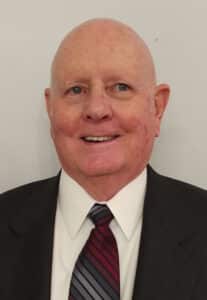Business Community
PenLight board elections draw six candidates for three positions
Six candidates are vying for three Peninsula Light board of directors positions in held in April and May.
Members will receive ballots, with postage-paid envelopes, this week and can vote via mail. PenLight will announce election results at its annual meeting at 5:30 p.m. May 6.
The company holds elections each year and sends ballots to every PenLight customer. The cooperative needs a 10% quorum of votes to announce results.
Britni Wickens, PenLight’s public relations manager and board administrator, said PenLight has always met the quorum, though the number of ballots returned varies.
Meet the candidates
The candidates are:

L. Paul Alvestad
L. Paul Alvestad, incumbent, who has business and law degrees and owns a law firm in Gig Harbor.
Winston Hanson, who has 40 years of experience in senior executive positions and has a masters degree in business administration.
Nick Markovich, incumbent, who has served on the Gig Harbor City Council, is a graduate of the University of Washington School of Law, and has held leadership positions on the board.
Pat McMonigle, who has graduate degrees in international relations and business management from Middlebury Institute and Georgetown University and is an FBI special agent.

Winston Hanson
Debra Ross, current board vice president, a former office manager for the Peninsula School District who is now a self-employed property manager.
Joe Tellez, who has 30 years of leadership experience in the utilities industry, is currently senior director at TRC, Inc., and has served in both public and investor-owned utilities.
PenLight planned to mail full bios of each candidate to customers March 25, Wickens said.
The job
The board’s nine members serve three-year terms. Three positions are on the ballot each year. The top three vote-getters from this year’s field of six candidates will win board posts.

Nick Markovich
“The responsibilities are to oversee, ensure and support staff in maintaining strong financial status, setting rates for affordable, reliable service to the community, and setting policies to support PenLight’s core values,” said Ross, the incumbent board vice president seeking re-election this year.
Once elected, board members must obtain obtain a credentialed cooperative director certification within two years. They get this from a training program that includes five classes through the National Rural Electric Cooperative Association.
Perhaps the highest-profile part of a board members’ job is setting rates for fellow members.
PenLight sets rates based on budgetary needs for equipment upgrades and system improvements, board chair Scott Junge said.

Pat McMonigle
“The board reviews and updates rates when such a change in price is necessary to properly operate the business affairs in a sound, businesslike and financially responsible and prudent manner,” he said.
How a co-op works
Peninsula Light is member-owned cooperative. That makes members the focus, said Jonathan White, senior project manager.
“Cooperatives are democratic organizations controlled by their members, who actively participate in setting policies and making decisions,” Junge said. “The board of directors takes a strong leadership role in striving to keep our rates reasonable and affordable.”
It began nearly 100 years ago, in 1925. That’s when a group of residents on the Key and Gig Harbor peninsulas formed a cooperative to tap into a line that Tacoma Power was constructing.

Debra Ross
PenLight now has 35,000 meters, White said. About 10 percent of those are commercial customers.
History
“In 1924, Tacoma Power was just completing a new hydro electric project at Lake Cushman dam, and needed to get power from Hoodsport to Tacoma. They were building a transmission line to Tacoma, and that line happened to be going through Gig Harbor and Key Peninsula areas,” said White, who is also a historian. “The community thought it was a great opportunity to tap into that line and set up a utility.”
Many of the founders were already farming under a co-op model, he said, so it made sense to use the same form of governance for a utility.
The project wasn’t without naysayers, arguments and hours of conversation. Some who were not familiar with the co-op idea thought someone would just take the money and run.
Members paid $100 to bring their households online. Those who couldn’t afford that (it was quite a sum in 1924-25; the equivalent today is $1,814.77) could help set poles and string lines to become a member.

Joe Tellez
The Home Colony on the Key Peninsula and the Gig Harbor business corridor were the first to come online. By Christmas 1926, anyone who wanted to be a member had a home humming with electricity.
Peninsula Light Company was ahead of the times by nearly 11 years.
President Franklin Roosevelt’s administration proposed a no-interest loan system, part of the Rural Electrification Act, 1936. The program provided loans to farmers who formed cooperatives similar to Peninsula Light. That program didn’t really get off the ground until 1939, White said.
One of the nation’s oldest electrical co-ops
PenLight is the sixth-oldest electrical service cooperative in the country and continues to operate much as it did when it first began, White said. It is a 501(c)12 organization, which means it cannot make a profit and is member-owned.
The Alvestad family was among those who benefited from the cooperative. The family settled in Crescent Valley after coming to the United States from Norway in the early 1900s. L. Paul Alvestad, a current board member running for re-election, is the third generation of his family to serve on the board.
He said that a primary benefit for his family in the early days of PenLight was to heat chicken houses. Only newspapers insulated chicken houses at the time.
“PenLight has improved its service by implementing a full territory meter upgrade with advanced meters, upgrading an aging billing and payment system, and providing a one-of-a-kind outage map,” she said.
Upgrades and outages
To minimize outages, Ross said PenLight has updated the power grid by running lines underground where available. Tree wire has replaced overhead lines.
The transmission from Tacoma Power, which is the supplier for PenLight, is all above ground, with two “taps” off the Tacoma Power system, said Amy Grice, chief operating officer.
“One runs from the Cushman Trail down past Artondale Elementary, and the other serves the entire Key Peninsula,” she said. “Impacts to the three-phase system is what will cause larger outages, however, with technology advancements and dispatch capabilities, PenLight tries our best to keep those outages to less than 500 meters between sectionalization points.”
A large outage occurred March 19 due to a car accident that damaged a transmission pole. These poles are different from standard poles, Wickens said.
“In the past year there have been two major outages that impacted the majority of PenLight territory, one in November, which was determined to be a Tacoma Power issue,” she said. “PenLight is always seeking ways to continue to provide reliable and affordable power. Improvements and technology advancements are ever changing, and PenLight continues to evaluate opportunities where plausible.”
